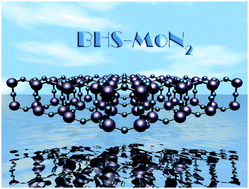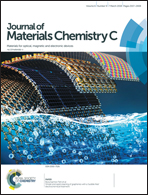A first-principles study of a real energetically stable MoN2 nanosheet and its tunable electronic structure
Abstract
Due to their extraordinary electronic and magnetic properties, transition-metal dinitrides (TMDNs) are the rising stars in two-dimensional (2D) layered materials. For MoN2 nanosheets, the structural stabilities of MoS2-type geometries are still controversial and all the known nanostructures are energetically unfavorable relative to the Mo bulk and N2 molecules. In this work, we have computationally discovered a non-MoS2-type bilayer hexagonal structure (BHS) for the MoN2 nanosheets. It is found that such BHS-MoN2 is the lowest-energy structure of the MoN2 nanosheets, which possess robust dynamical, mechanical, and thermal stabilities. Moreover, it is more favorable than the elementary substances, which confirms that it is the real energetically stable structure. Different from the MoS2-type MoN2 nanosheets, the BHS-MoN2 one is an indirect-band-gap semiconductor, for which the tensile strains would effectively reduce the gap size and cause an indirect-to-quasi-direct band gap transition and a semiconductor-to-metal transition. Tunable ferromagnetism will be induced by hole doping in the BHS-MoN2 system, which is transformed into a robust half-metal against the strain. Our study demonstrates that the non-MoS2-type structure will emerge in the TMDN systems, which possess robust structural stabilities and peculiar electronic properties for potential nano-electronics and device applications.

- This article is part of the themed collection: 2018 Journal of Materials Chemistry C HOT Papers


 Please wait while we load your content...
Please wait while we load your content...